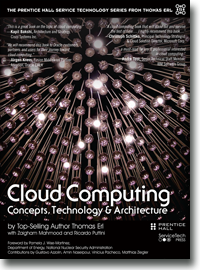Cloud Computing Patterns, Mechanisms > Basics > Web Technology > Basic Web Technology
Basic Web Technology
The World Wide Web is a system of interlinked IT resources that are accessed through the Internet. The two basic components of the Web are the Web browser client and the Web server. Other components, such as proxies, caching services, gateways, and load balancers, are used to improve Web application characteristics such as scalability and security. These additional components reside in a layered architecture that is positioned between the client and the server.
Three fundamental elements comprise the technology architecture of the Web:
- Uniform Resource Locators (URL) – A standard syntax used for creating identifiers that point to Web-based resources, the URL is often structured using a logical network location.
- Hypertext Transfer Protocol (HTTP) – This is the primary communications protocol used to exchange content and data throughout the World Wide Web. URLs are typically transmitted via HTTP.
- Markup Languages (HTML, XML) – Markup languages provide a lightweight means of expressing Web-centric data and metadata. The two primary markup languages are HTML (which is used to express the presentation of Web pages) and XML (which allows for the definition of vocabularies used to associate meaning to Web-based data via metadata).
For example, a Web browser can request to execute an action like read, write, update, or delete on a Web resource on the Internet, and proceed to identify and locate the Web resource through its URL. The request is sent using HTTP to the resource host, which is also identified by a URL. The Web server locates the Web resource and performs the requested operation, which is followed by a response being sent back to the client. The response may be comprised of content that includes HTML and XML statements.
Web resources are represented as hypermedia as opposed to hypertext, meaning media such as graphics, audio, video, plain text, and URLs can be referenced collectively in a single document. Some types of hypermedia resources cannot be rendered without additional software or Web browser plug-ins.
